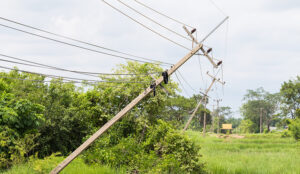In the second of his series on business continuity, Graham Chick talks us through the various solutions that companies might turn to when faced with telecoms malfunctions or the loss of a building through things like storm damage.
In last month’s article, I endeavoured to explain why it is imperative that call centre operators give serious consideration to the adoption of both disaster recovery and business continuity plans. The final paragraph of that article touched on the question of what would happen if an inbound call centre lost its telecommunications and suggested that this would probably constitute a call centre manager’s worst nightmare.
Why? Because every inbound and/or outbound call centre is heavily, if not totally, reliant upon receiving and/or making telephone calls. And while there is a gradual migration towards the adoption of contact centres where a call centre’s customers can also contact the agent via e-mail, short message service (SMS) and the like – media which, it should be remembered, also use the telephone network for their transmission – the vast majority of contacts made in to/from a call centre rely on voice calls.
Five key questions to ask yourself when considering the need for telecoms continuity
|
So, just stop and think for a moment and, using the five key questions attached to this article, consider what would happen if your call centre was unable to receive calls from, and/or make calls to, your customer base as a result of a cut telephone cable, ACD/PBX failure, or loss of your call centre building for any one of a number of reasons highlighted in my previous article.
In this increasingly competitive world, the ramifications of adverse effects on brand and reputation of lost communications will be huge, with outsourced call centres often defaulting on their closely monitored service level agreements (SLAs) and performance targets.
So what can be done to mitigate the risks of a failed telecommunications infrastructure or loss of a building? There will be those of you that will argue that because you have another one, two, three or four call centres within your organisation you can simply reroute your incoming calls to those call centres to have the calls answered as seamlessly as they were before.
However, I rarely see call centres operating at 50%/33%/25% capacity on the off-chance that spare capacity may be required to take calls from a failed call centre. In fact most, if not all, call centres work at as close to capacity as they can – sometimes at even greater than 100% using call queuing and agent ‘call back’ software to generate even greater efficiencies.
The simple answer is that even if you did have multiple call centres – and most call centre businesses do not – it would be wise to plan to recover the failed call centre without also severely disrupting other call centres in the group.
Different types of solutions
Another solution might be to retain the services of a recovery site provider, reserving space on either a dedicated or syndicated/shared basis in one of their fully equipped buildings. This is certainly an option, but one that will be extremely expensive if you intend relocating any more than a limited number (invariably 25-40%) of your agents to continue business operations following the outage. And this begs the question: just what will the other 60-75% of your agents be doing until normal service is resumed in a day, a few days, a week or longer?
However, if you are going to consider the adoption of a recovery site for, say, 25% of your agents, and simply plan to maintain a basic service should you suffer an outage, you need to give very careful thought to how you might implement this option. While a growing number of recovery sites are becoming available, they are invariably located near to the major conurbations and do involve a certain amount of additional travelling to and from the nearest/selected recovery site.
Accordingly, not all agents will be able to relocate to an alternative call centre environment. Prior family commitments of collecting the children from school, looking after ageing parents, or simply requiring a flexible working environment is not conducive to working in an alternative location some distance away from one’s normal place of work.
There is also an argument that the use of non-geographic numbers (0800s; 0870s; 0845s) enables call centre operators to quickly, and relatively easily, reroute incoming calls directed to specific 08XX ‘service numbers’ onto alternative specific geographic numbers. On the face of it, we have a solution. But, in reality, call centre agents rarely work in only one service.
Using full skills-based routing functionality within the ACD/PBX, agents are able to take calls from multiple services based upon different priorities and the skills required to answer the specific call. This really cancels out the benefits of being able to reroute these service numbers anywhere as the call centre agent allocated to answer incoming calls to these respective services can only be in one location at any one time.
So, what is the answer to the problem of delivering ‘always on’ telecommunications to our mission-critical call centres?
In the era of 365x24x7 call centres, call queuing, power diallers and the like – where ever greater efficiencies are being sought to maximise call centre profitability, and where brand protection and delivery of stringent SLAs is paramount – what is really needed in order to provide the ultimate in business continuity planning is a solution that delivers a more flexible way of working on an ‘all day, every day’ basis. What is needed is something that will enable call centre agents to work literally at any time and from anywhere.
The philosophy surrounding remote or home-working is certainly not new. In fact, one of the great exponents of flexible/home working, David Speakman of the online travel agency Travel Councellors, established such a virtual call centre as far back as 1998. Now, some eight years later, the concept is well-proven, allowing call centre agents to work just as seamlessly from home or, at the very least, closer to home than from within a conventional call centre.
How flexible home/remote working can be used to provide a comprehensive disaster recovery and/or business continuity solution, as well as to grow your call centre business, will be addressed in next month’s article.

Graham Chick
Graham Chick is managing director of Gematech
Author: Jonty Pearce
Published On: 29th Dec 2006 - Last modified: 23rd Jul 2024
Read more about - Technology



































